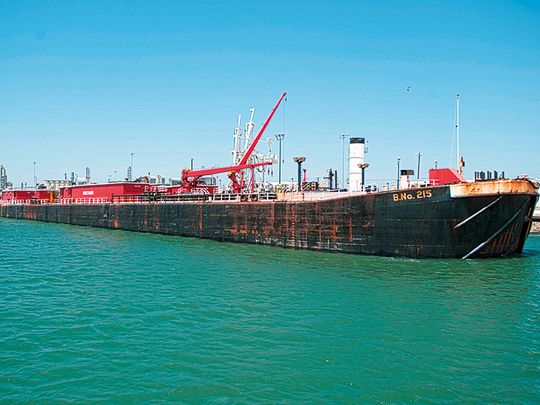
Singapore: Dwindling volumes at the biggest US oil storage hub and the potential for bigger cargoes to sail overseas is giving American crude a premium sheen once again.
The price of US benchmark oil has gone above the Middle East marker for the first time in more than a year, data compiled by Bloomberg show. The shale boom that drove American crude to a discount spurred an unprecedented surge of relatively cheap shipments to Asia. That was a pain for top Opec producers such as Saudi Arabia, which had their market share threatened as they implemented output curbs to clear a global glut.
Now, a combination of new pipeline options, a rail car crunch, demand from Gulf Coast refineries and a thirst for US supply from overseas means less supply is being hoarded. Stockpiles at Cushing, Oklahoma, have slid in all but one of the past 14 weeks as booming American production bypasses the storage hub. With the Louisiana Offshore Oil Port, or LOOP, this month loading its first very large crude carrier for export, speculation is increasing that bigger cargoes will head abroad.
“Sentiment for US crude has improved in part from LOOP’s very large crude carrier export capability, but fundamentally, falling Cushing stocks remains the main support for higher WTI prices,” said Den Syahril, an analyst at industry consultant FGE in Singapore.
West Texas Intermediate crude was at a premium of 36 cents a barrel to Dubai oil on Monday, compared with an average discount of about $2 over 2017. The US grade, of so-called light-sweet quality, had gone below the Middle East marker in December 2016, when a historic output-cut pact involving Opec and other producers including Russia pushed the price of medium-sour Dubai crude above WTI.
Relative costs of WTI, Dubai and London’s Brent crude are closely watched by everyone from oil traders to money managers as they serve as a proxy for the affordability of crude from the world’s largest producing regions — the Americas, the Middle East and Africa. A steeper discount for WTI had prompted the world’s biggest oil buyers in Asia to widen their choices of crude grades in the past year as US output surged toward 10 million barrels a day.












